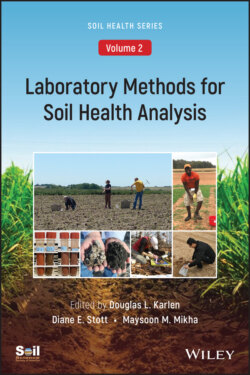Читать книгу Laboratory Methods for Soil Health Analysis, Volume 2 - Группа авторов - Страница 37
Sensor‐based Measurements
ОглавлениеField‐scale soil property mapping, generally used to improve nutrient use efficiencies, can also document the trajectory of some soil health indicators (Mulla and Schepers, 1997; Smith et al., 1993). However, conventional soil sampling and laboratory analyses can be expensive, time consuming, and thus limit its value for making timely adjustments to management. In response, several novel sensor‐based technologies have been developed (Vol. 1, Chapter 8), thus increasing the likelihood of making real‐time soil health assessments.
Electromagnetic, optical, mechanical, electrochemical, airflow, and acoustic sensors for automated field measurements have been adapted to quantify changes in soil physical and chemical properties across agricultural landscapes (Adamchuk et al., 2004). Most sensors are property‐specific, with electromagnetic, mechanical, electrochemical, and airflow types associated with measurements of electrical conductivity, soil resistance, nutrients or pH, and air permeability, respectively. Optical sensors are useful for predicting both chemical and physical properties (Thomasson et al., 2001). Sensor‐based measurements can also be used to quantify field‐scale distributions of inferred soil properties which can then be partitioned into distinct management zones. It is important to acknowledge, however, that sensor‐based measurements provide either high‐resolution spatial or temporal data, but usually not both. With further technological advancement, sensor‐based measurements may ultimately provide real‐time control of input applications.
